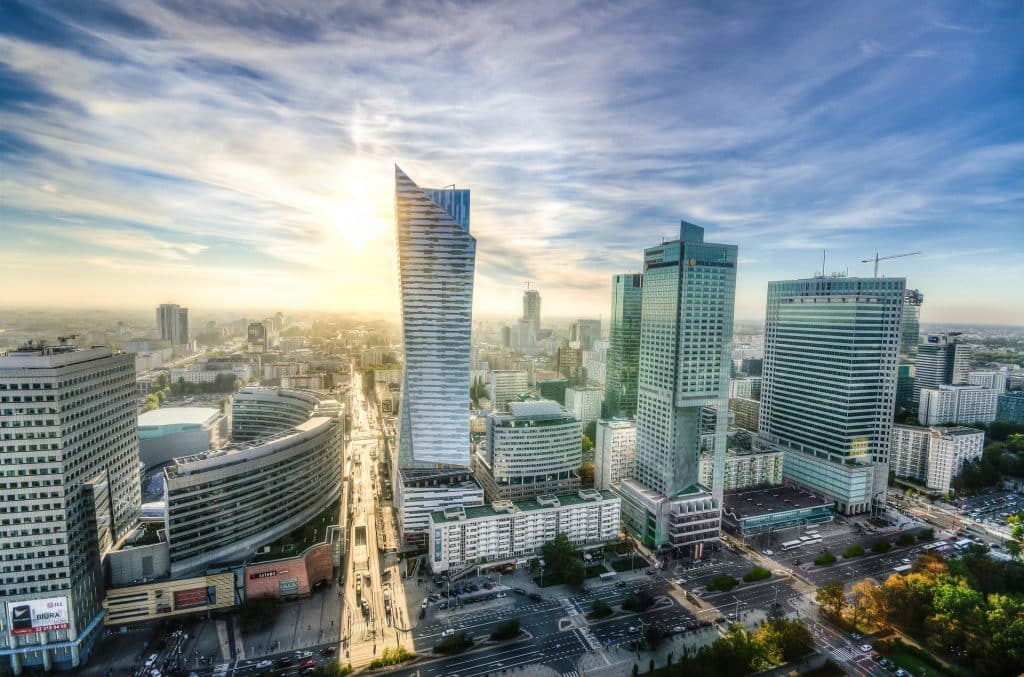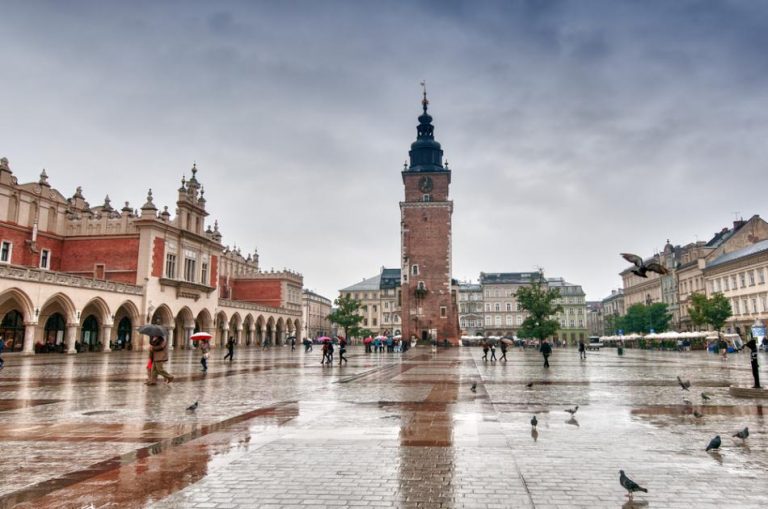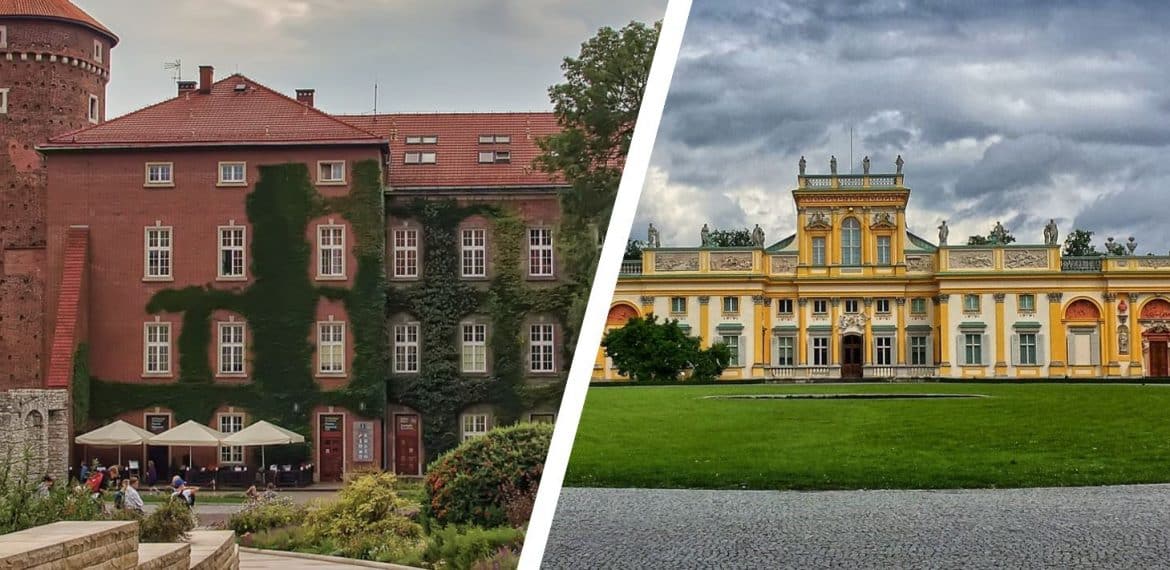Contents
- 1 Exploring Warsaw: A Journey Through Poland’s Modern Capital
- 2 Krakow: the Historical Heart of Polish Kings
- 3 Ultimate City Guide: Discovering the Rich History of Warsaw
- 4 Krakow’s Royal Legacy: A Guide to Poland’s Former Capital
- 5 Warsaw and Krakow: A Tale of Two Polish Capitals
- 6 The Scientific Heritage of Warsaw and Krakow
- 7 Krakow’s Architectural Splendor: From Wawel Castle to the Old Town
- 8 FAQs
- 8.1 What can I look forward to in Warsaw and Krakow’s Old Towns?
- 8.2 How do Warsaw and Krakow reflect Poland’s membership in the European Union?
- 8.3 Can you tell us about the significance of the University of Warsaw in Central Europe?
- 8.4 What role did the Warsaw Uprising play in the history of Poland?
- 8.5 How does Krakow’s status as one of the oldest cities in Poland influence its cultural landscape?
Recently, Warsaw has once again captured international attention due to its dynamic urban development and cultural renaissance. As the capital city of Poland, Warsaw stands as a testament to the nation’s vibrant spirit, seamlessly blending its storied past with modern innovation. Just a train ride away, the ancient city of Krakow whispers tales of regal splendor, once the throne of Polish monarchs. Together, these cities offer a compelling narrative of Poland’s cultural diversity, from the contemporary pulse of its capital to the historical echoes of its former royal seat. Join us on an inspiring journey through the cobblestone streets and sprawling city avenues of Poland, where the allure of Warsaw and Krakow beckons travelers to discover the soul of this proud nation.
Exploring Warsaw: A Journey Through Poland’s Modern Capital
Embark on an exploration of Warsaw, the capital and largest city of the Republic of Poland. It’s located in the Mazovia region in east-central Poland. Its urban landscape weaves the layers of history and modernity together to create a narrative as complex as the history of Poland itself. Discover the sites where the Warsaw Uprising and the Warsaw Ghetto Uprising left their indelible marks on the spirit of the nation. Immerse yourself in the vibrant Polish culture with a visit to the prestigious Polish National Opera, or delve into the poignant history of Polish Jews, an integral part of the city’s soul. As a crossroads between Eastern and Central Europe, Warsaw stands as a testament to the resilience and richness of Polish history, inviting you to uncover its treasures and understand the essence of this ever-evolving metropolis.

Krakow: the Historical Heart of Polish Kings
Stepping into Krakow is akin to walking through the pages of a history book, where the grandeur of the Kingdom of Poland is palpable at every turn. This former capital, one of the oldest cities in Poland, was the seat of kings and the political hub of the Polish state for centuries. The majestic Wawel Castle stands as a symbol of the nation’s royal heritage, having witnessed the coronation of numerous Polish kings. Krakow’s historical significance extends beyond its royal connections; it has been a hub of Polish culture and intellectual life for generations. Krakow was home to some of the country’s most revered artists and scholars, such as Jan Matejko or Ignacy Łukasiewicz. As a testament to its resilience, Krakow remained relatively unscathed during the Partitions of Poland, allowing it to retain much of its architectural and cultural integrity. Today, Krakow incites visitors to explore its rich tapestry of Polish history, which is the key to the strong identity of Poland and the country’s people.
Ultimate City Guide: Discovering the Rich History of Warsaw
While its history dates back almost 700 years, it only gained prominence during the 1500s. That is when Warsaw ascended to the status of capital city by the order of King Sigismund III. As you wander through the city centre of Warsaw, the remnants of the past stand shoulder to shoulder with contemporary architecture, creating a unique urban tapestry. The Royal Castle and the Warsaw Old Town, meticulously rebuilt after the devastation of the Warsaw Uprising, are just a few of the landmarks that tell the story of a resilient nation.
Delving deeper into Warsaw’s modern capital allure, one can’t help but be captivated by the city’s cultural offerings. From the grandeur of the National Theatre to the innovative exhibitions at the Copernicus Science Centre, Warsaw is a hub for Polish culture and creativity. The city’s role as the art capital of Poland is clear thanks to its wide variety of modern art museums and its booming entertainment scene. As a bridge between the Eastern and Western European cultures, Warsaw invites explorers to embark on a journey through Poland, offering a glimpse into the soul of this fascinating region.
Krakow’s Royal Legacy: A Guide to Poland’s Former Capital
While Krakow became the permanent seat of the Piast dynasty in 1038, its true history dates back as far as the 4th century, making it a truly ancient settlement. The illustrious narrative of the City of Kings is deeply entwined with the Kingdom of Poland, where the echoes of its regal past still resonate within the walls of the iconic Wawel Castle. This bastion of Polish heritage, perched above the Vistula River, has been the residence of Polish kings for centuries, and its opulent chambers and chapels are a testament to the city’s royal legacy. The Old Town, a UNESCO World Heritage site, is a labyrinth of medieval streets where the spirit of the Commonwealth and the intellectual prowess of the Polish state are palpable in every square and building.

As the historical capital and a major trading hub of Poland, Krakow is considered a melting pot of cultures ready for you explore. The city’s Jewish Quarter, Kazimierz, was once a vibrant center of Polish Jews, contributing significantly to the cultural and economic vitality of the region. Today, it stands as a symbol of resilience and remembrance, inviting visitors to delve into the complex Polish history and the values that have shaped the nation for centuries. Krakow’s legacy, preserved through its architecture and traditions, continues to inspire and educate those who walk its ancient streets, making it an essential destination for anyone seeking to understand the soul of Polish kings and the enduring spirit of the Polish state.
Warsaw and Krakow: A Tale of Two Polish Capitals
The narrative of Warsaw and Krakow as the two capitals of Poland is steeped in the nation’s evolution, each playing pivotal roles at different epochs in the history of Poland. Warsaw, the current capital, emerged from the ashes of the Warsaw Uprising to become a symbol of the nation’s unyielding spirit and modernity. Its skyline, punctuated by the spires of the Palace of Culture and Science, a relic from the Polish People’s Republic, contrasts with the contemporary glass facades of the Warsaw Stock Exchange, representing Poland’s economic resurgence. Krakow, the ancient capital, encapsulates the essence of the Kingdom of Poland with its intricate tenements and wonderfully preserved landmarks. The city’s cultural patrimony, safeguarded through the tumults of history, continues to be a beacon of Polish culture and identity.
In the heart of Central Europe, these two cities narrate a shared history that has shaped the collective consciousness of the Polish people. Meanwhile, Warsaw’s role as Poland’s Capital City is underscored by the presence of all of Poland’s branches of government. The two Polish houses of Parliament – Sejm and Senat, as well as the Presidential Palace and Supreme Court, are all found in Warsaw’s city centre. This tale of two capitals, each with its distinct character and legacy, continues to fascinate and inspire, offering a window into the soul of a nation that has withstood the test of time and emerged with a vibrant, indomitable spirit.
The Scientific Heritage of Warsaw and Krakow
There are also some of the best colleges and universities in Central Europe in Warsaw. The famous University of Warsaw is right in the middle of Poland’s capital city. It is a beacon of knowledge and enlightenment that makes a big difference in the city’s intellectual and culture life. It has a long history that goes back to the creation of the Duchy of Warsaw. It has been an important part of shaping the thoughts of many generations, including many famous people who have made their mark on Polish history and beyond. There are many study centres and academies in Warsaw, like the Warsaw School of Economics and the Polish Academy of Sciences, that show how committed the city is to education. These institutions continue to encourage new ideas and high standards of scholarship in the city’s robust academic community. Due to its important historical sites and active academic life, Warsaw is a must-see for anyone wanting to know more about Poland’s educaction.
In the middle of the busy streets of Poland’s second-biggest city is one of the oldest schools in both Poland and Europe. A lot of smart people who went to Jagiellonian University have gone on to change Krakow’s history and the history of the whole world. The famous people who went there include Pope John Paul II and Nobel Prize winner Wisława Szymborska. Krakow’s also plays a big role in many EU R&D programmes.
Cultural Impact of The Modern and The Historical Capitals
Not only are Warsaw’s schools places where scientists can learn, but they are also places where cultural events and conversations between people from different countries happen. The Warsaw Autumn festival is one event that brings artists and scholars from all over the world to the city. It shows how important it is as a culture hub in Eastern Europe.
Krakow also has a lot of interesting culture events and festivals to choose from. In its 15-year history, the Krakow Film Music Festival has grown into one of the best celebrations of movie scores. Well-known musicians such as Hans Zimmer and Howard Shore have performed at FMF at least once. Because of events like these, Kraków has one of the best and most varied music scenes in Europe and is a top choice for music fans from all over the world.
Krakow’s Architectural Splendor: From Wawel Castle to the Old Town
Krakow’s beautiful architecture tells a story of its long and interesting history. It is a UNESCO World Heritage site, and each building tells a story of the city’s glory days as the capital of the Kingdom of Poland. The beautiful mix of Gothic, Renaissance, and Baroque building shows how strong the city is and how it has been able to keep its cultural identity through Poland’s and other countries’ turbulent divisions. This is the Main Square in the Old Town. It is one of the biggest mediaeval town squares in Europe and the centre of all of Krakow’s fun and culture.
People who walk through the streets with cobblestones feel like they’ve gone back in time to when Krakow was the home of Polish kings and the cultural centre of Poland. The area of Kazimierz, which was once a thriving centre for Polish Jews, has some of the most beautiful buildings in the city. The synagogues and other buildings built by them add to Krakow’s history. Keeping these architectural wonders in good shape not only gives people a chance to see a live museum, but it also serves as a powerful reminder of how the city has survived the tests of time. By preserving its architectural history, Krakow makes sure that future generations will still be able to enjoy the city’s beauty and the stories written in its stones. This makes it a must-see for anyone interested in the grandeur of Poland’s historical capitals.
FAQs
What can I look forward to in Warsaw and Krakow’s Old Towns?
For history and culture lovers, Warsaw and Krakow’s Old Towns are the places to be. After being completely rebuilt, Warsaw’s Old Town is a lively place with shops, restaurants, and narrow streets that lead to the Royal Castle. The mediaeval market place, Rynek Główny, and the beautiful St. Mary’s Basilica are what make Krakow’s Old Town a World Heritage site. In these beloved parts of Poland’s capital and its former capital, there is a great mix of history, architecture, and a lively vibe.
How do Warsaw and Krakow reflect Poland’s membership in the European Union?
The fast growth and development of Warsaw and Krakow are great examples of Poland’s accession to the European Union. As the capital city of Poland and an important city in the European Union, Warsaw has modern infrastructure and a strong economy, thanks in part to investments from the EU. Krakow has kept its traditional charm while also embracing EU-funded projects that improve its educational and cultural institutions, like the Jagiellonian University. Both cities show the benefits of being part of the EU by having better quality of life and more foreign attention.
Can you tell us about the significance of the University of Warsaw in Central Europe?
One of the most prestigious schools in Central Europe is the University of Warsaw, which is known for its high academic standards and important research efforts. It has been an important place for educational growth in Poland and the surrounding area since the time of the Duchy of Warsaw. Some of the university’s famous graduates are important thinkers and leaders who have changed Polish culture and history. Because it helps people from all over the world work together and do research, Warsaw is still known as an educational powerhouse in Central Europe.
What role did the Warsaw Uprising play in the history of Poland?
The Warsaw Uprising of 1944 was a turning point in Polish history. It showed how the Polish people fought back against Nazi rule during World War II. It was ultimately unsuccessful and caused a lot of damage to the city, but the uprising showed how strong the Polish people are. People remember how brave it was and what the Polish Army and citizens gave up. Warsaw will always remember the event through statues and museums that honour the bravery and strength of those who fought for Poland’s freedom.
How does Krakow’s status as one of the oldest cities in Poland influence its cultural landscape?
Krakow is one of the oldest towns in Poland, which has a big impact on its culture and gives it a sense of timelessness and historical depth. The design of the city, from the Wawel Castle to the old streets of Kazimierz, shows Poland’s history, from the time of the Kingdom of Poland to the partitions and afterward. Krakow is a live museum of Polish history because it takes care of its cultural heritage, such as the role that Polish Jews played in the city’s growth. This complex cultural tapestry draws experts, artists, and tourists alike, all eager to experience the lasting effects of Polish history and culture.
